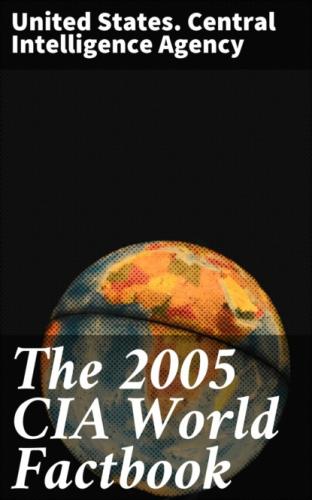equipment, cement, mining, petroleum, machinery, software
Industrial production growth rate:
7.4% (2004 est.)
Electricity - production:
547.2 billion kWh (2002)
Electricity - production by source: fossil fuel: 81.7% hydro: 14.5% nuclear: 3.4% other: 0.3% (2001)
Electricity - consumption:
510.1 billion kWh (2002)
Electricity - exports:
350 million kWh (2002)
Electricity - imports:
1.54 billion kWh (2002)
Oil - production:
780,000 bbl/day (2004 est.)
Oil - consumption:
2.13 million bbl/day (2001 est.)
Oil - exports:
NA
Oil - imports:
NA
Oil - proved reserves:
5.7 billion bbl (2004 est.)
Natural gas - production:
22.75 billion cu m (2001 est.)
Natural gas - consumption:
22.75 billion cu m (2001 est.)
Natural gas - exports:
0 cu m (2001 est.)
Natural gas - imports:
0 cu m (2001 est.)
Natural gas - proved reserves:
542.4 billion cu m (2004)
Current account balance:
$4.897 billion (2004 est.)
Exports:
$69.18 billion f.o.b. (2004 est.)
Exports - commodities:
textile goods, gems and jewelry, engineering goods, chemicals,
leather manufactures
Exports - partners:
US 17%, UAE 8.8%, China 5.5%, Hong Kong 4.7%, UK 4.5%, Singapore
4.5% (2004)
Imports:
$89.33 billion f.o.b. (2004 est.)
Imports - commodities:
crude oil, machinery, gems, fertilizer, chemicals
Imports - partners:
China 6.1%, US 6%, Switzerland 5.2%, Belgium 4.4% (2004)
Reserves of foreign exchange and gold:
$126 billion (2004 est.)
Debt - external:
$117.2 billion (2004 est.)
Economic aid - recipient:
$2.9 billion (FY98/99)
Currency (code):
Indian rupee (INR)
Currency code:
INR
Exchange rates:
Indian rupees per US dollar - 45.317 (2004), 46.583 (2003), 48.61
(2002), 47.186 (2001), 44.942 (2000)
Fiscal year:
1 April - 31 March
Communications India
Telephones - main lines in use:
48.917 million (2003)
Telephones - mobile cellular:
26,154,400 (2003)
Telephone system:
general assessment: recent deregulation and liberalization of
telecommunications laws and policies have prompted rapid change;
local and long distance service provided throughout all regions of
the country, with services primarily concentrated in the urban
areas; steady improvement is taking place with the recent admission
of private and private-public investors, but telephone density
remains low at about seven for each 100 persons nationwide but only
one per 100 persons in rural areas and a national waiting list of
over 1.7 million; fastest growth is in cellular service with modest
growth in fixed lines
domestic: expansion of domestic service, although still weak in
rural areas, resulted from increased competition and dramatic
reductions in price led in large part by wireless service; mobile
cellular service (both CDMA and GSM) introduced in 1994 and
organized nationwide into four metropolitan cities and 19 telecom
circles each with about three private service providers and one
state-owned service provider; in recent years significant trunk
capacity added in the form of fiber-optic cable and one of the
world's largest domestic satellite systems, the Indian National
Satellite system (INSAT), with five satellites supporting 33,000
very small aperture terminals (VSAT)
international: country code - 91; satellite earth stations - 8
Intelsat (Indian Ocean) and 1 Inmarsat (Indian Ocean region); nine
gateway exchanges operating from Mumbai (Bombay), New Delhi, Kolkata
(Calcutta), Chennai (Madras), Jalandhar, Kanpur, Gandhinagar,
Hyderabad, and Ernakulam; 5 submarine cables, including Sea-Me-We-3
with landing sites at Cochin and Mumbai (Bombay), Fiber-Optic Link
Around the Globe (FLAG) with landing site at Mumbai (Bombay), South
Africa - Far East (SAFE) with landing site at Cochin, i2icn linking
to Singapore with landing sites at Mumbai (Bombay) and Chennai
(Madras), and Tata Indicom linking Singapore and Chennai (Madras),
provide a significant increase in the bandwidth available for both
voice and data traffic (2004)
Radio broadcast stations:
AM 153, FM 91, shortwave 68 (1998)
Radios:
116 million (1997)
Television broadcast stations: 562 (of which 82 stations have 1 kW or greater power and 480 stations have less than 1 kW of power) (1997)
Televisions:
63 million (1997)
Internet country code:
.in
Internet hosts:
86,871 (2003)
Internet Service Providers (ISPs):
43 (2000)
Internet users:
18.481 million (2003)
Transportation India
Railways:
total: 63,230 km (16,693 km electrified)
broad gauge: 45,718 km 1.676-m gauge
narrow gauge: 14,406 km 1.000-m gauge; 3,106 km 0.762-m gauge and
0.610-m
